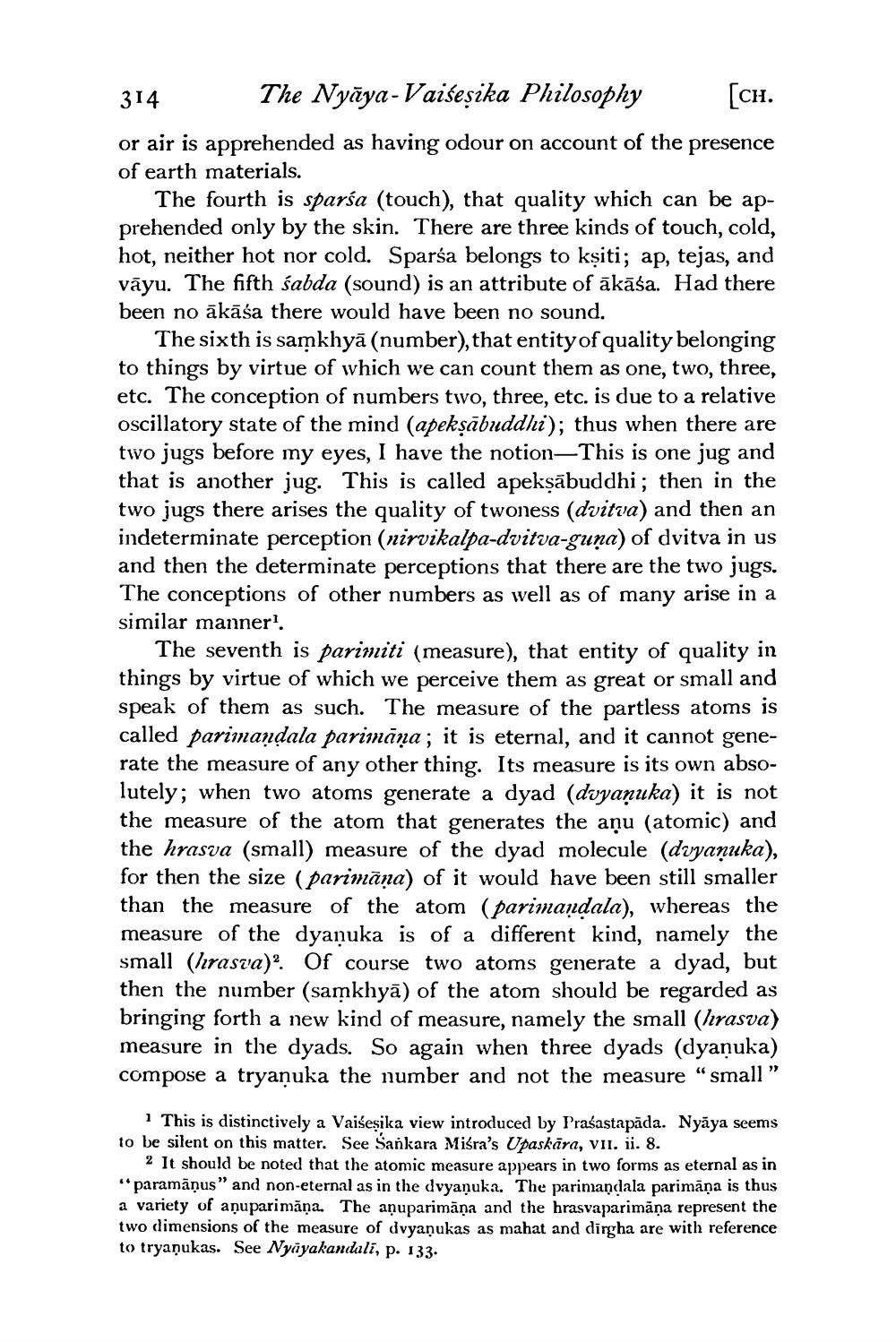________________
314
The Nyaya-Vaiseṣika Philosophy
or air is apprehended as having odour on account of the of earth materials.
[CH.
presence
The fourth is sparsa (touch), that quality which can be apprehended only by the skin. There are three kinds of touch, cold, hot, neither hot nor cold. Sparsa belongs to kṣiti; ap, tejas, and vayu. The fifth sabda (sound) is an attribute of ākāśa. Had there been no ākāśa there would have been no sound.
The sixth is samkhyā (number), that entity of quality belonging to things by virtue of which we can count them as one, two, three, etc. The conception of numbers two, three, etc. is due to a relative oscillatory state of the mind (apekṣābuddhi); thus when there are two jugs before my eyes, I have the notion-This is one jug and that is another jug. This is called apekṣābuddhi; then in the two jugs there arises the quality of twoness (dvitva) and then an indeterminate perception (nirvikalpa-dvitva-guna) of dvitva in us and then the determinate perceptions that there are the two jugs. The conceptions of other numbers as well as of many arise in a similar manner1.
The seventh is parimiti (measure), that entity of quality in things by virtue of which we perceive them as great or small and speak of them as such. The measure of the partless atoms is called parimandala parimāņa; it is eternal, and it cannot generate the measure of any other thing. Its measure is its own absolutely; when two atoms generate a dyad (dvyaṇuka) it is not the measure of the atom that generates the aņu (atomic) and the hrasva (small) measure of the dyad molecule (dvyanuka), for then the size (parimāna) of it would have been still smaller than the measure of the atom (parimaṇḍala), whereas the measure of the dyanuka is of a different kind, namely the small (hrasva). Of course two atoms generate a dyad, but then the number (samkhyā) of the atom should be regarded as bringing forth a new kind of measure, namely the small (hrasva) measure in the dyads. So again when three dyads (dyanuka) compose a tryanuka the number and not the measure "small"
1 This is distinctively a Vaiśesika view introduced by Prasastapāda. Nyaya seems to be silent on this matter. See Sankara Miśra's Upaskāra, vII. ii. 8.
2 It should be noted that the atomic measure appears in two forms as eternal as in "paramāņus" and non-eternal as in the dvyaṇuka. The parimandala parimāņa is thus a variety of aṇuparimaņa. The anuparimana and the hrasvaparimaṇa represent the two dimensions of the measure of dvyanukas as mahat and dirgha are with reference to tryanukas. See Nyayakandali, p. 133.




